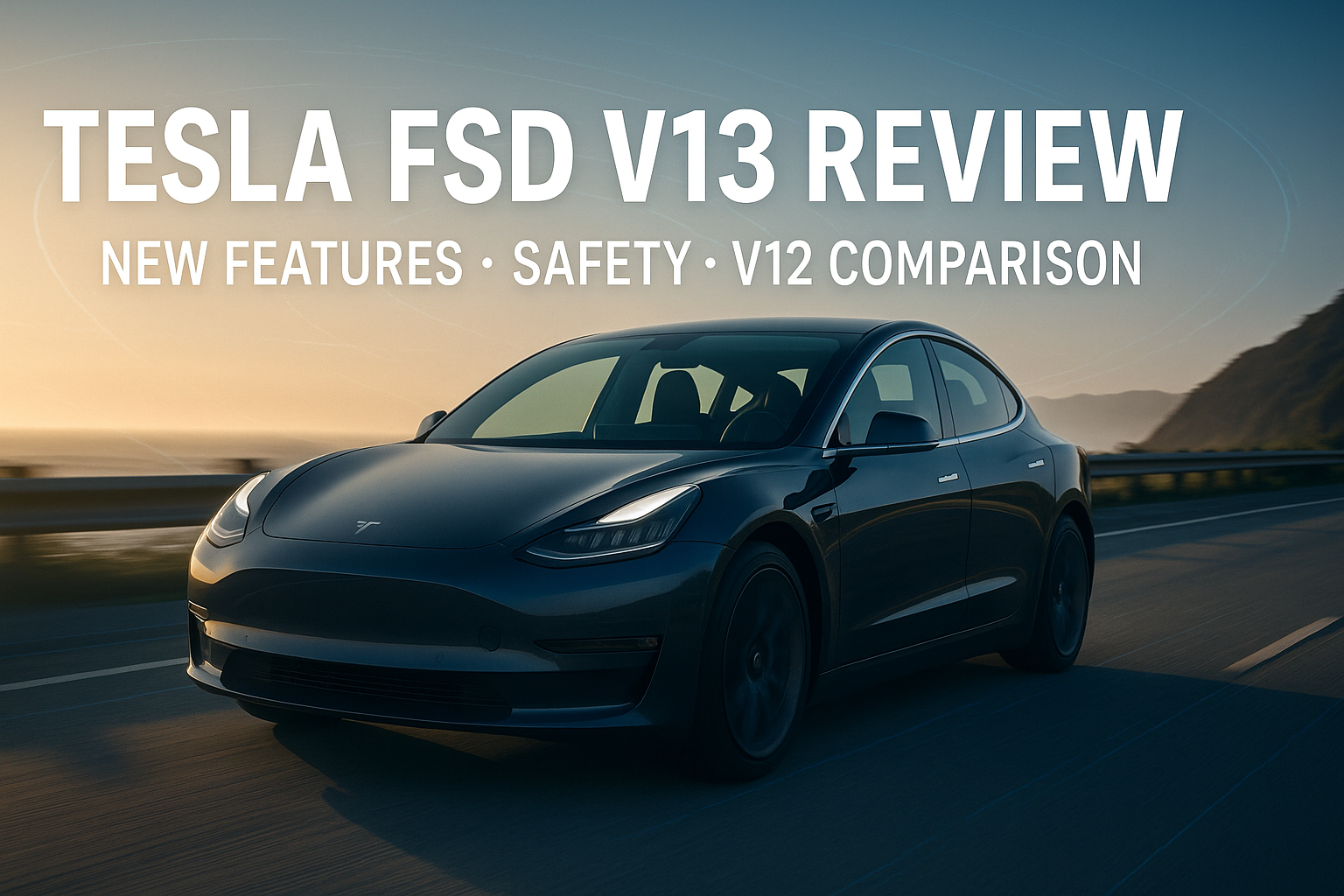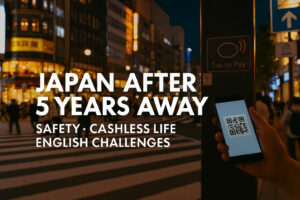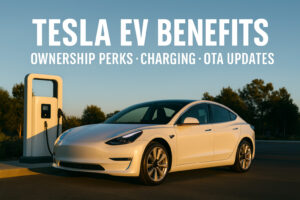Tesla FSD V13 Review: New Features, Safety & V12 Comparison

Introduction
Hello everyone, this is Suzuki from Eco Drive.
Today’s topic is Tesla’s latest FSD Version 13.
Some of you may already know that the software for Tesla’s Full Self‑Driving (FSD) has undergone a major upgrade from Version 12 to Version 13.
In this post, I’ll explain how Version 13 differs from Version 12 in a way that’s as easy to understand as possible.
3 Major Changes
There are three main changes in this latest update.
I’ll break each down in order, so please stick around until the end.
The videos embedded in this article are narrated in Japanese, but English subtitles are available.
[Video Version Here]
1st Key Point: Strengthening the End‑to‑End Neural Network
The first major highlight is the reinforcement of the end‑to‑end neural network.
You might be thinking, “That sounds complicated,” but simply put, it means the car’s driving has become even more human‑like and independent in its decision‑making.
Conventional self‑driving typically processes incoming data in stages: “Detection → Analysis → Decision → Action.”
But with the end‑to‑end neural network, one AI now handles all those steps in a unified way.
In practical terms, here are the three big improvements:
1. Simplification
The AI directly interprets the data from the cameras and instantly decides on any driving action—like acceleration, braking, or steering.
2. Enhanced Decision‑Making
By learning from massive amounts of human driving data, the system can replicate smoother maneuvers and more human‑like movements.
3. Better Handling of Unknown Situations
The AI can respond flexibly and safely in complex traffic scenarios, leading to more natural, less‑forced decisions.
In other words, with Version 13, the AI is smarter, and the car’s driving behavior is even more natural and safe.
Comparing it to previous FSD versions, you’ll really notice how much more “human‑like” it feels.
2nd Key Point: New Features
Next, let’s look at the newly added features in Version 13.
■ Activate FSD from a Parked Position
Previously, you could only enable self‑driving after you’d started moving.
Now, with Version 13, you can turn on FSD while the car is still parked, which means it can even handle backing out of a parking spot automatically.
■ Auto‑Parking After Arrival
Another noteworthy addition is the car’s ability to find its own parking spot when you reach your destination. Version 13 keeps self‑driving active until the car comes to a stop in a space.
This update brings us one step closer to a fully automated FSD experience. From starting the car to actually parking it, you can automate nearly everything.
It’s basically the kind of “wouldn’t it be great if…” feature many of us have been hoping for.
3rd Key Point: Improvement in Speed Profiles
The third major update is the improvement in speed profiles.
That might sound technical, but in essence, it means the car now adjusts speed more naturally based on conditions.
Let’s consider city driving first.
In previous versions, sometimes the car would accelerate too quickly near intersections or brake abruptly for no apparent reason.
There were moments of sudden starts and stops, but in Version 13, the AI does a much better job of reading the surroundings, making smoother speed adjustments.
Now let’s talk about highway driving.
Before, there were times when merging or passing felt awkwardly fast or slow.
But with Version 13, acceleration and deceleration feel closer to how humans drive, making merging and passing more natural.
In other words, thanks to these improved speed profiles, the driving experience is safer and more comfortable for everyone in the car. Fewer abrupt changes in speed means less stress for passengers—clearly a significant advancement.
Our Real‑World Impressions: Changes in V13.2

So how does Version 13 actually feel on the road?
At our company, we own several Tesla vehicles, and our Model Y was updated to Version 13—specifically V13.2. We took it out for a test drive right away.
In short, our main takeaway was: “It’s more human‑like and smoother than ever.”
We already felt a big leap forward in Version 12, but Version 13 takes it up another notch, making it feel even more natural and human‑like.
For instance, as sudden starts and stops have decreased, passenger comfort has clearly improved.
The car now senses its surroundings more effectively and drives with gentler maneuvers, meaning there are fewer moments when you think, “Huh, that was a bit weird.”
It’s impressive how smoothly Tesla can enhance FSD through updates like this.
Even More Cautious = Even Safer Driving
While Version 12 already felt more cautious, Version 13 takes that safety‑oriented mindset to another level.
That said, “more cautious = more reassuring” is true, but there are times you might find it too slow.
For example, at an uncontrolled intersection on a major road, it sometimes waits so long to make a left turn that cars behind may honk. You might think, “This is overkill,” or “I’d get through faster if I were steering myself.”
While the extra caution can be mildly frustrating time‑wise, it also equates to added peace of mind.
Particularly in complex intersections or areas with poor visibility, having FSD calmly and patiently judge the situation is a big advantage.
The Jump from V11 to V12 Was Huge, but This Is Still a Notable Step
The update from Version 11 to 12 was such a massive leap that, to be honest, Version 13 doesn’t feel as “shocking” in comparison.
When the AI took center stage in Version 12, it felt like driving was fundamentally transformed.
Still, one of the big talking points of Version 13 is the ability to start FSD from a standstill.
We had been hoping for this feature since Version 12, and now it’s here. That’s a significant improvement.
Being able to launch self‑driving right out of a parking spot is very convenient in practice and greatly expands the capabilities of autonomous driving.
You could say it’s one more step toward fully autonomous driving.
The Full Flow: From Parking to Arrival and Auto‑Parking
In actual use, FSD Version 13 can now handle the following sequence:
1. Exiting a Parking Space: The rear camera checks for safety. If clear, the car automatically backs out of the parking spot.
2. Aligning the Car: The vehicle turns the steering wheel in the desired direction, and once it’s aligned, it automatically drives forward.
3. Driving to the Destination via FSD: You continue on FSD all the way to your chosen destination.
4. Auto‑Parking: Upon arrival, the car finds a parking spot on its own and parks itself.
In the U.S., head‑in parking is the norm, so there aren’t many “back‑in” situations. In Japan, though, back‑in parking is more common, which raises the question of how Tesla might adapt FSD for parking in countries like Japan.
It’ll be interesting to see if Tesla tailors the system to different regional parking cultures.
Either way, Version 13 clearly shows multiple areas of progress and features that make it even more practical and convenient.
Looking Ahead: From Supervised to Unsupervised

So, how might Tesla’s FSD evolve from here?
Currently (through Version 13), it’s still in what’s called “supervised” mode—meaning the system still requires some level of driver oversight.
Specifically, while you don’t need your hands on the steering wheel, you do need to keep your eyes on the road. There’s an in‑cabin camera monitoring the driver’s gaze, and if you look away too long, you’ll get a warning. In the worst case, the system might disable FSD.
All that could radically change with unsupervised FSD, where you wouldn’t have to keep your eyes on the road:
– You could look back at the rear seats, or watch a video on the center screen.
– Essentially, you’d rely entirely on the car to drive itself.
Of course, there are still major technological and legal hurdles. But Elon Musk has suggested that 2025 could see the arrival of unsupervised FSD. If that happens, it really might transform the whole concept of “the driver.”
This could be the moment self‑driving technology truly becomes “the real deal.”
Technical and Legal Hurdles, and What We Can Look Forward To
Naturally, there are big questions about whether it’s technically feasible or legally permissible.
Still, in the U.S., there’s a strong “let’s just try it” culture, so it’s possible that places like California or Texas may pioneer such features first.
Given Elon Musk’s statement that “unsupervised FSD will arrive by 2025,” Tesla fans have plenty to be excited about.
Perhaps we’ll start seeing unsupervised features emerge around Version 14 or so. We’ll be eagerly anticipating that day.
Summary: The Significance of FSD Version 13 and Its Future
So there you have it: an overview of Tesla’s latest FSD Version 13.
The key points include:
– End‑to‑end neural network enhancements for more “human‑like” driving behavior
– New features such as FSD activation from a parked position and auto‑parking
– Improved speed profiles for smoother speed control
– The system is now even safer and more cautious, though it can feel “too slow” at times
– Excitement around moving toward unsupervised capabilities, even as we acknowledge the technological and legal challenges
It’ll be fascinating to watch Version 14 and beyond. Will we see even more breakthroughs or the arrival of “no‑monitor” self‑driving? We’ll be keeping a close eye on Tesla’s next moves.
If You Want to Experience Self‑Driving…
Our company offers rental Teslas where you can experience FSD yourself.
We’ve created a sample video for a simulated trip from San Francisco to Yosemite National Park. You can watch more in the video playlist here.
Our Services
We offer comprehensive automotive solutions—buy, sell, rent, and repair in one place.
Car Sales
Browse our lineup of quality used cars with transparent pricing and up to a two-year warranty on select models.
View InventoryAuto Repair
Get expert service from our certified Toyota Master Mechanic. We primarily service Toyota vehicles.
Schedule ServiceTrade-in / Sell
We pay top dollar for your vehicle—especially hybrids. Count on fair, transparent appraisals.
Get EstimateCar Rentals
Choose between fuel-saving hybrid rentals and a Tesla with Full Self-Driving Capability—both at competitive rates.
Reserve Now




